In the Zhihua Temple Monastery of Chengdu, resides the Wenshu Yuan Monastery, which boasts of metamorphic beauty. Known for its fine serenity and even finer heritage, this very notable Buddhist Monastery is several centuries old and engages visitors in the most unique ways. This essay aims to explain the history, remarkable architectural features, and deep-rooted traditions that make it the case that religious and secular travelers alike seem to be drawn in by its magnificence. If you happen to be someone who is looking to delve further into Chengdu’s cultural history, then this post is perfect for you as it details everything needed to understand and explore the beauty of Wenshu Yuan Monastery. Get ready for an appealing fusion of rich culture and wonderful magnificence residing in one single structure.
What makes Wenshu Yuan Monastery unique among Chengdu’s attractions?
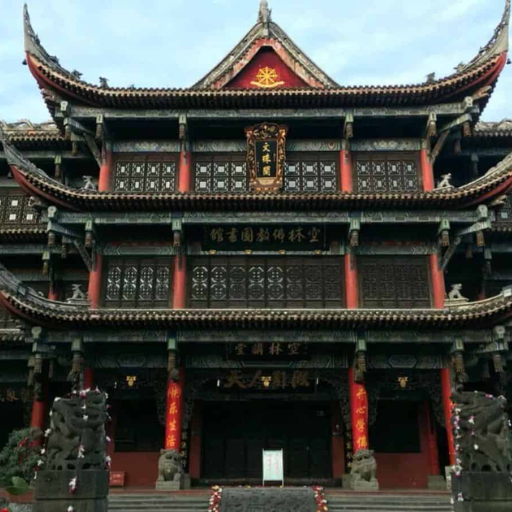
What makes Wenshu Yuan Monastery unique among Chengdu’s attractions
The serene atmosphere complimented by the exquisite architecture of Wenshu Yuan Monastery makes it one of the preserved treasures of Buddhist heritage in Chengdu. Constructed during the Tang Dynasty, it was and still is a preserved treasure of Buddhist heritage in Chengdu. The peaceful monastery is surrounded by busy city life, which makes its beautiful gardens, intricate carvings, and wondrous ancient statues a great retreat. Not only does it impress with stunning natural beauty, tranquil ambiance, and profound significance, but it also houses incredible scripts, cultural relics, and pieces of elaborate calligraphy that offer a glimpse into the religious art and profound spirituality of China. Because of its effortless blend of tranquil environment and rich cultural significance, it is a one-of-a-kind and must-visit place in Chengdu.
The history and significance of Wenshu Yuan Monastery
Wenshu Yuan Monastery, or Manjushri Monastery, is one of the well-known Buddhist temples of Chengdu and has deep historical and cultural significance. Originally built during the Tang Dynasty, it has seen many restorations, particularly in the Qing Dynasty which gave the monastery much of its current architectural splendor. The monastery is dedicated to Manjushri, the Bodhisattva of Wisdom, and is one of the most important places for Buddhist practice as well as education in Southwest China. I find the serenity of the Wenshu Yuan Monastery during its busiest hours the most astonishing thing. As I stroll through its halls and gardens, it feels like taking a walk in a living museum that showcases centuries of devotion, artistry, and tradition.
Architectural highlights of the monastery
The blend of classical Chinese architecture and exquisite craftsmanship at the Wenshu Yuan Monastery is unique. Its most remarkable feature is the Grand Hall, which has a wooden beam structure and tiled roofs embodying harmony and balance. The Hall is also noted for its wooden joinery, which is a Chinese craftsmanship hallmark. The Bell Tower is another architectural wonder, which houses a bronze bell from the Ming Dynasty. The precision of the craftsmanship is astonishing, as the bell not only serves as a single piece of artwork but also a spiritual metaphor, being cast at critical events.
The layout of the monastery’s buildings follows the Chinese tradition of axis-centered layout design, which incorporates the main halls, side courtyards, and quiet gardens featuring tranquility inspiring reflection and meditation. In addition to the details mentioned, the temple features splendid gardens further beautified by koi ponds and the surrounding ancient trees, creating a peaceful sanctuary. With intricate details adorning the stone bridges and pathways, the artistic finesse increases, revealing the aged skill of stone masons.
Famous Buddhist relics and artwork housed in the monastery
There are numerous Buddhist relics and pieces of art at the monastery, including some that are revered for their historical significance, like the Buddha’s sacred tooth relic and the gold jeweled stupa. Visitors are also astounded by the ancient gilded statue of Avalokiteshvara (Guanyin), the symbol of mercy and compassion, has gently serene face is so powerfully charged with tenderness and beautiful intricacy.
Some of the most amazing pieces the monastery owns, in terms of preservation, are the handwritten silk sutras from the Tang Dynasty, showcasing the artistry of Buddhistic scribes. Also found in the monastery are the walls displaying stunning paintings of Jataka tales murals which depict various stories of the important figure of Buddhism, The Buddha. These murals are remarkable examples of traditional-style paintings, mainly because of the pigments used being natural.
The romantic and bronze bells, along with other elegantly carved artifacts, enrich the region’s rich artistic traditions, as do these relics after all. Not only do these intricate carvings of commendable engravings of Buddhist mantras and motifs serve as pieces of art, but as artifacts, further serving to underline the importance of remaining links to cultures and Buddhist traditions that span centuries.
How can visitors experience authentic Buddhist culture at Wenshu Yuan Monastery?
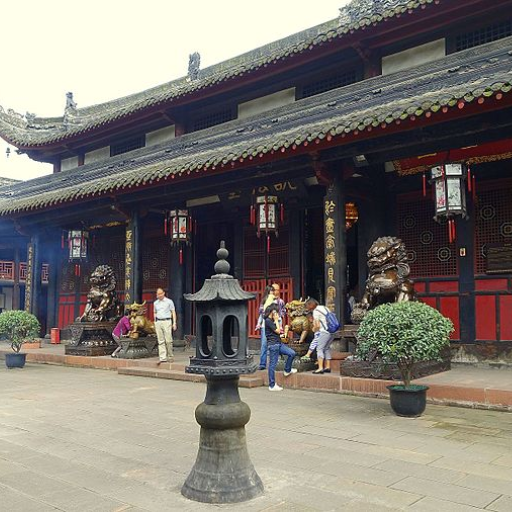
How can visitors experience authentic Buddhist culture at Wenshu Yuan Monastery
Guests can participate in various enriching activities to immerse themselves in the authentic Buddhist culture at Wenshu Yuan Monastery. For example, guests can join resident monks in their daily meditation sessions that provide a glimpse into the core of Buddhism – its intricate spiritual practices. Guests can also explore the gardens within the serene confines of the monastery, which aid in providing a natural space for meditation and self-reflection. The on-site restaurant also serves meals that guests can enjoy, as all dishes are prepared per Buddhist culinary practices. Furthermore, guests can attend cultural events and ceremonies celebrated at the monastery which enables them to appreciate ancient customs and rituals.
Participating in Buddhist rituals and ceremonies
Engagement in Buddhist rituals and ceremonies provides a valuable chance to connect with the religious heritage of Buddhism. These activities often involve chanting, bowing, and meditative exercises which intend to develop awareness, express gratitude, and pursue enlightenment. Such ceremonial practices as offering incense or flowers at an altar exemplify devotion to the Buddha and the impermanence of life. Vesak observance (Buddha’s Birthday) is integrated to unite members of the community around prayers, sermons, and charitable activities while reflecting on the Buddha’s teachings. From novice ordination and sutra chanting to lamp lighting, these experiences remind us of the Buddhist values of compassion, wisdom, and interconnectedness.
Interacting with resident monks and learning about their daily lives
In my encounters with the resident monks, I observed that their daily life was imbued with self-discipline and mindfulness. They would start their day by rising before the sun. Their day begins with meditation and chanting, besides the usual alms collection and communal meals taken in silence. From my observations, it appears that a monk’s life within the temples is very strictly governed by the monastic codes. The monks I met loved to open up about their personal journeys and Buddhist philosophy, which made me realize how committed these people are to simple living, ethical behavior, and wisdom. I left these interactions wiser, as they set an indelible mark on my life.
Exploring the monastery’s gardens and peaceful surroundings
Strolling through the monastery’s garden was as if entering a peaceful refuge. The neatly maintained walkways were decorated with colorful blooms, great trees, and peaceful stone statues, all of which showed intimacy with nature. Koi ponds mirroring the sky and benches welcoming stillness were each turn’s new piece of the puzzle. The calm environment appeared to promote the monastic teachings of meditation and self-restraint, encouraging guests to stop and think for a moment. It was more than a feast to the eyes; the garden served an aesthetic and sacred purpose, to foster an attitude of deep thinking and peace.
What are the must-see highlights of Wenshu Yuan Monastery?
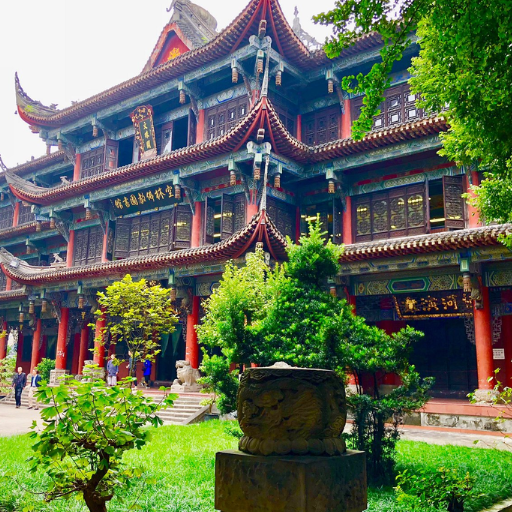
What are the must-see highlights of Wenshu Yuan Monastery
- Grand Hall – It is indeed the richly furnished hall of the monastery monastic which possesses sacred Buddhas’ statues along with secluded space for praying and meditation.
- The Pagodas – The pre-colonial period pagodas spread across the grounds are marvelous structural works that testify to the ancient period of the monastery.
- The Tea House – Situated at the center of the garden, the tearoom serves as a nice place for savoring a collection of classical tea in a calm environment.
- The Buddhist Library – Because of the religious books and scrolls housed in gruesome essentials, this spot is remarkable for anyone interested in Buddhist philosophy and culture.
- The Gardens – Not only are the gardens pleasing visually, filled with colorful plants and pecan ponds but they are also designed to appeal to soft sounds greatly.
These salient features integrated make Wenshu Yuan Monastery appealing in one place for those on a quest for satisfaction in devotion or the enthusiasts of history.
The Hall of Manjushri Bodhisattva and its significance
Wenshu Yuan Monastery’s Hall of Manjushri Bodhisattva has an important function for practicing Buddhism and deepening spirituality. As a hall dedicated to Manjushri, the Bodhisattva of Wisdom, it represents achieving enlightenment as well as acquiring profound wisdom. While entering the hall, visitors are welcomed by the carvings, statues, and other imagery depicting wisdom and mindfulness that have the charm to attract every eye. This place in particular encourages devotion, reflection, and meditation, bringing peace and calm to both practitioners and visitors. The hall is a sacred place of worship and at the same time is regarded as a cultural monument because of its artistic and architectural beauty, which also shows the heritage of Chinese Buddhism.
Notable Buddhist statues and paintings within the monastery
Within the monastery, there are many highly revered Buddhist statues and paintings, all having rich historical and spiritual significance, each of them being different from the other. One of these is the gilded bronze statue of Buddha Shakyamuni with a height of around 2 meters. The statue is well known for its calm facial expression and wonderful craftsmanship with the head of the statue symbolizing enlightenment and compassion. The other famous artifact is the Thousand Armed Guanyin statue, an unparalleled artistic piece illustrating the boundless love and aid of the Bodhisattva for sentient beings.
The monastery’s collection includes an astonishing tapestry painting (thangka) depicting the Wheel of Life illustrating the Buddhist views of samsara and the journey towards liberation. This piece serves as a tribute to the skillful creation and devotion of its makers as it is meticulously painted with natural pigments. Each statue and painting is painstakingly maintained in terms of the structures and their cultural and religious considerations which is characteristic of the monastery’s devotion to these for posterity.
The monastery’s library and its collection of ancient scriptures
The monastery’s library holds an impressive selection of very old scriptures, manuscripts, and texts that deal with Buddhist philosophy and are integral to its teachings. These sutras, commentaries, and historical chronicles that describe aspects of the Buddhist practices and its history are written on handmade paper with natural dyes. Sacred texts are often richly illustrated and kept in decorated wooden boxes signifying their great importance. The aforementioned religious thought specialists can acquire knowledge as well as use the space for contemplation and oral teaching practices. This library serves not only as a place that preserves physical documents but also their memories imbued with the search for wisdom and sharing knowledge of different generations.
How to get to Wenshu Yuan Monastery and plan your visit?
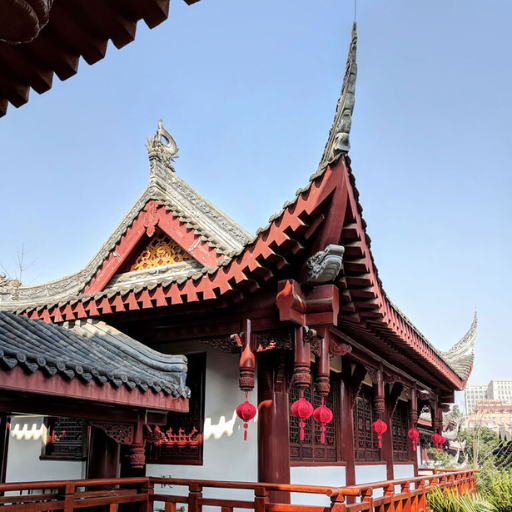
How to get to Wenshu Yuan Monastery and plan your visit
Located in the central area of Chengdu, China, Wenshu Yuan Monastery can be reached through various transport facilities. If you decide to use the Chengdu Metro, take Line 1 and get off at Wenshu Monastery Station where you will use Exit K. The site can also be reached through various city buses with the nearby Wenshu Yuan Bus Stop.
Make sure to set aside about a few hours for the splendid gardens, historical halls, the impressive Buddhist library, and relaxing atmosphere. Unlike some other places, the monastery can be visited seven days a week mostly from early morning to late afternoon of which there is no set entrance fee but donations are appreciated. While visiting make sure to dress modestly to not disturb the sacred vibe, aim for a morning visit so that you can soak in the calm before it gets too bustling.
Location and transportation options to reach the monastery
The monastery is positioned in peaceful surroundings not far from the city, making it easy to visit. A taxi or rideshare can be taken, which is the easiest option, especially if coming from the city center. Additionally, there is public transit available; several buses service the area around the monastery, although a short hike is needed to get to the entrance. If you choose to travel by car, there is plenty of parking space at the venue. No matter what form of transport is taken, the monastery is simple to find, and major routes are well-signposted.
Best times to visit and recommended duration for a tour
In my opinion, the best time to visit the monastery is during spring or early fall when the climate is mild, and the outside environment is stunning. Try to time your visit in the morning to take advantage of a calm atmosphere and avoid heavy traffic, especially on weekends. The average time given for a walk around the monastery is one and a half to two hours, which allows ample time for the study of the architecture, history, and the quiet peaceful atmosphere that surrounds the place.
Combining Wenshu Yuan Monastery with other Chengdu attractions
If you want to combine Wenshu Yuan Monastery with other places in Chengdu, you can easily craft a satisfying travel plan. A bit farther away is Kuanzhai Alley, a historic district with Qing-era shops and restaurants. Chengdu has a unique culture that can be felt through its narrow streets. You can also visit the People’s Park which is closer, as it is a great place to spend time among greenery and take in a cup of tea while watching people do tai chi and dance. For those who are keen on Chengdu’s history and art, the Sichuan Museum is a short drive away, and it holds ancient artifacts and impressive paintings and sculptures. All these attractions combine to give you a healthy dose of culture, leisure, and history which will make your visit to Chengdu unforgettable.
What dining options are available at Wenshu Yuan Monastery?
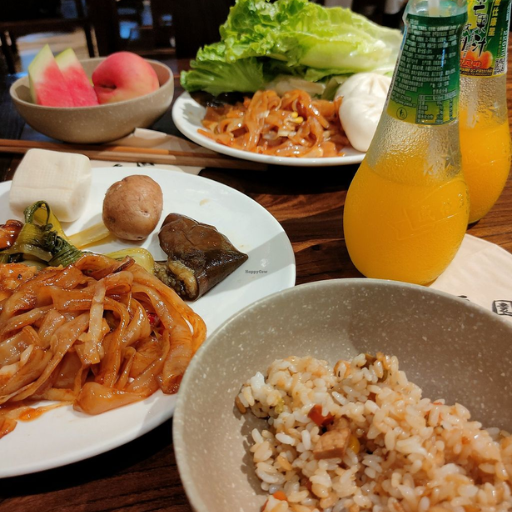
What dining options are available at Wenshu Yuan Monastery
The visitors of Wen Shu Yuam Monastery can relish diverse cuisines that encapsulate local culture. The monastery is famous for its vegetarian meals with a variety of dishes made from fresh seasonal ingredients. Furthermore, authentic Sichuanese food is offered by several teahouses and street stalls which allow tourists to taste local food in an ancient and peaceful atmosphere.
The famous vegetarian restaurant within the monastery grounds
Wenshu Yuan Monastery has a world-renowned dumpling restaurant that draws in hundreds of thousands of tourists all year round. The restaurant is a haven for people looking for a calm place to dine in a vegetarian-Buddhist manner, as it serves a wide range of wholesome vegetarian meals. The restaurant’s signature dishes include fresh handmade dumplings, different kinds of tofu, and most commendably seasoned fresh vegetables. All the dishes are carefully prepared with very little oil and spices to eliminate unnatural tastes. The ambiance merges with the serene atmosphere of the monastery which guarantees a peaceful meal. It’s very popular among visitors due to its affordability and the chance to enjoy rich and wholesome vegetarian foods of Sichuan in Sichuan culture.
Traditional Sichuan snacks and tea culture experiences
Exploring the culinary legacy of the region captures Tiananmen spicy bean jelly, rice balls, and peanuts. Alongside these popular snacks, Sichuan cuisine tea culture also grasps historical significance with teahouses highlighting traditional decorations and serving methods. Focusing on the bold and powerful flavors, floral jasmine tea along with Tibetan smoked tea further enhances these experiences. All these aspects unite showcasing the fine art of tea and culture in the local lifestyle. These elements capture the treasured gastronomic and cultural heritage of Sichuan.
How does Wenshu Yuan Monastery fit into a broader Chengdu tour itinerary?
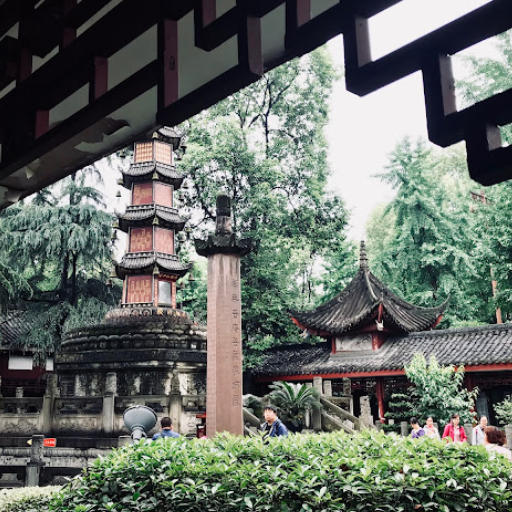
How does Wenshu Yuan Monastery fit into a broader Chengdu tour itinerary
As part of a broader tour of Chengdu, Wenshu Yuan Monastery is a very peaceful and interesting site to visit. The calming nature of the well-designed gardens, stunning Buddhist artifacts, and the architecture of the buildings themselves provide an escape from the vibrant pace of the city’s life. People can enjoy the ancient heritage and spiritual customs of Chengdu which go hand-in-hand with other active points of interest like Chunxi Road or Kuanzhai Alley. In addition, its position next to some tea shops and souvenir stores helps to better integrate cultural sightseeing with relaxing and gastronomic pursuits.
Recommended Chengdu tours featuring Wenshu Yuan Monastery
For those wanting to visit Wenshu Yuan Monastery, several outstanding tours cater to the needs of different people. Numerous guided tours incorporate the Wenshu Yuan Monastery alongside other famous sights of Chengdu. For instance, the cultural day tour may include visits to Wenshu Yuan Monastery, The Chengdu Research Base of Giant Panda Breeding, and Kuanzhai Alley so that tourists can experience the culture and nature of the area. On the other hand, a food-oriented tour could focus on exploring Wenshu Monastery’s tea houses and local market stalls and savoring authentic Sichuan food. Those short on time can appreciate half-day city tours which usually feature Wenshu Yuan Monastery along with other surrounding sights. These tours allow visitors to get a glimpse into the city’s history and beauty, and combine multiple sites in one. These tours are appealing since they don’t only greatly cater to the diverse interests and time restrictions of travelers, but also offer rich culture.
Combining the monastery visit with other cultural sites in Chengdu
For those combining a visit to Wenshu Yuan Monastery with other cultural sites around Chengdu, I suggest making a stop at Kuanzhai Alley and Jinli Ancient Street. These places capture the essence of Chengdu’s past and culture, showcasing the city’s architecture, delicious snacks, and craft shops. There is also the Sichuan Museum whose collection on the region’s art and history is a wonderful addition to the quiet experience offered by the monastery. These sites combine to offer a more wholesome cultural experience in Chengdu.
Private tour options for a more in-depth experience
For those seeking a more bespoke experience, private tours in Chengdu provide a wonderful opportunity to engage with local culture, history, and food at a deeper level. They usually include guided visits to famous places like Kuanzhai Alley, Jinli Ancient Street, and Sichuan Museum, all of which come with amazing stories from local experts. They often include authentic Sichuan cooking lessons or even panda volunteering opportunities at Chengdu Research Base. Such advanced and personalized arrangements facilitate the most fulfilling experience in Chengdu while also allowing for flexibility during the trip.
References
Frequently Asked Questions (FAQ)
Q: What is Wenshu Monastery and why is it significant?
A: Wenshu Monastery, also known as Wenshu Yuan, is the largest and best-preserved Buddhist temple in Chengdu city. Originally known as Xinxiang Temple, it has a rich history dating back to the Tang Dynasty. The monastery is significant for its cultural and spiritual importance, housing numerous valuable cultural relics, including paintings, calligraphy, and Buddhist artifacts.
Q: What are some highlights of Wenshu Monastery?
A: Highlights of Wenshu Monastery include its beautiful architecture, tranquil gardens, and impressive collection of Buddhist relics. Visitors can admire ancient Buddha statues, explore the Hall of Celestial Kings, and view rare sutras in the Sutra Depository. The monastery also features a famous vegetarian restaurant and a traditional teahouse where visitors can experience local cuisine and culture.
Q: How do I get to Wenshu Monastery?
A: To get to Wenshu Monastery, you can take the Chengdu Metro Line 1 to Wenshu Monastery station. The monastery is located in the center of Chengdu, making it easily accessible from other popular attractions. Alternatively, you can take a bus or taxi to Wenshu Yuan Street, where the monastery is situated.
Q: Is Wenshu Monastery open to visitors, and is there an admission fee?
A: Yes, Wenshu Monastery is open to visitors. The temple is free to enter, making it an accessible attraction for both locals and tourists. However, some specific areas or special exhibitions within the monastery may require a small fee.
Q: Can visitors participate in Buddhist activities at Wenshu Monastery?
A: Yes, visitors can participate in various Buddhist activities at Wenshu Monastery. You may observe or join in meditation sessions, listen to chanting by Buddhist monks, or attend lectures on Buddhism. The monastery offers a genuine experience of Buddhist culture and practices in Chengdu.
Q: What other attractions are near Wenshu Monastery?
A: Wenshu Monastery is conveniently located near several other popular attractions in Chengdu city. Nearby sites include the Chengdu Museum, Kuanzhai Alley, Jinli Ancient Street, and People’s Park. The famous Chengdu Panda Base is also accessible via public transportation. These attractions offer a comprehensive experience of Chengdu’s culture and history.
Q: Is there a recommended time to visit Wenshu Monastery?
A: The best time to visit Wenshu Monastery is early morning or late afternoon when the atmosphere is most serene. These times also offer the opportunity to witness Buddhist ceremonies. Weekdays are generally less crowded than weekends. If you’re interested in experiencing local culture, consider visiting during Buddhist festivals or holidays for special events and activities.
Q: Can I try Sichuan cuisine near Wenshu Monastery?
A: Absolutely! While Wenshu Monastery is famous for its vegetarian restaurant, the surrounding area offers numerous options to try authentic Sichuan cuisine. Wenshu Yuan Street and the nearby alleys are filled with local eateries serving Chengdu snacks and traditional Sichuan dishes. You can also find teahouses where you can enjoy local tea culture.